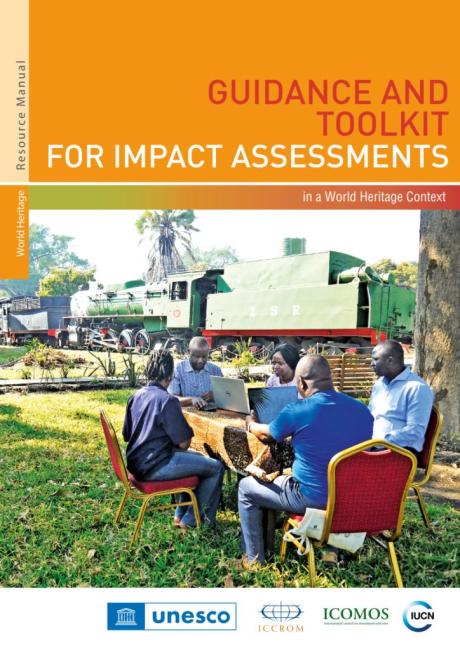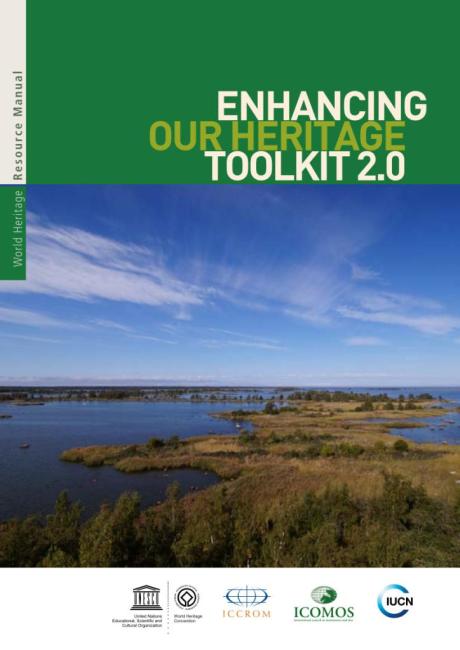Why is a new manual needed?
The two existing manuals on managing Managing Natural World Heritage (2012) and Managing Cultural World Heritage (2013) were produced over a decade ago and much has changed since then. Most notably, at an international level the heritage sector has made great efforts towards overcoming the artificial division of cultural and natural heritage that has all too often constrained good management of heritage places, and limited the recognition of diverse world views in conservation practice. This new manual now combines aspects of both previous manuals, acknowledging that most heritage places are a product of both natural and cultural phenomena, and need integrated and people-centred approaches to their protection and management. However, certain sector-specific approaches, tools and techniques will still be needed to address the characteristics of each place.
In this new manual there is also a significant shift in attention to the context of heritage places. This is in recognition of the increasing challenges of managing heritage in isolation from the wider natural and built environment. There are many factors negatively impacting on heritage for which solutions can only be found through understanding the dynamics between the heritage places and the wider setting and responding appropriately and responsibly.
Heritage management must also be informed by new international agreements and policies which call for more urgent action on issues such as protecting biodiversity as well as cultural diversity, promoting social equity, addressing climate change effects and refining approaches to sustainable development. New holistic approaches to management are needed to optimize the role of heritage for the achievement of global goals. There is also an important need and opportunity of better understanding the intangible cultural heritage of different communities, including to support intercultural dialogue and encourage mutual respect for different views and ways of life. This manual is based on the premise that a
World Heritage property
A cultural, natural or mixed heritage place inscribed on the World Heritage List and therefore considered to be of OUV for humanity. The responsibility for nominating a property to the World Heritage List falls upon the State(s) Party(ies) where it is located. The World Heritage Committee decides whether a property should be inscribed on the World Heritage List, taking into account the technical recommendations of the Advisory Bodies following rigorous evaluation processes.
When used as a general term, World Heritage refers to all the natural, cultural and mixed properties inscribed on the World Heritage List.
may be part of a larger heritage place, which can be valued for many reasons.
Finally, this manual recognizes that heritage management needs to be carried out by multiple actors together with heritage practitioners. While heritage management has in the past frequently placed an emphasis on the work of heritage professionals, there is now recognition that is essential to respect for the rights, roles and knowledge of Indigenous Peoples, local and other associated communities in protecting heritage. Decisions on heritage are affected by larger scale policies and planning decisions that go beyond the scope of the heritage sector. By understanding the many groups and individuals connected to the heritage place, effective and more equitable decision-making can be achieved. This new manual integrates into its content participatory approaches to heritage and management, in other
words, how people with diverse roles can be part of its governance and management. For heritage places in and around urban areas and settlements, this manual is also connected to the UNESCO Urban Heritage Atlas.
This manual is linked with the Enhancing our Heritage Toolkit 2.0 (hereafter EoH 2.0 or the Toolkit) which is a self-assessment methodology to identify how well a
World Heritage property
A cultural, natural or mixed heritage place inscribed on the World Heritage List and therefore considered to be of OUV for humanity. The responsibility for nominating a property to the World Heritage List falls upon the State(s) Party(ies) where it is located. The World Heritage Committee decides whether a property should be inscribed on the World Heritage List, taking into account the technical recommendations of the Advisory Bodies following rigorous evaluation processes.
When used as a general term, World Heritage refers to all the natural, cultural and mixed properties inscribed on the World Heritage List.
or other heritage place is being managed. The Toolkit is a revision from the initial Enhancing our Heritage Toolkit developed by the IUCN World Commission on Protected Areas together with UNESCO. EoH 2.0 continues to be structured in the same way as the original version, while offering a flexible
methodology that can be applied to the specific needs of each heritage place, regardless of its category and designation. It also draws elements from, and establishes links with other existing methodologies to facilitate their integration such as the World Heritage Periodic Reporting questionnaire and the IUCN Green List Standard. The Toolkit contains twelve tools that can be used separately or collectively to evaluate the effectiveness of the management system. The use of the Toolkit helps managers to put in practice many of the conceptual approaches included in this manual. Throughout the manual the relevant tools or worksheets of the EOH 2.0 are suggested to facilitate an integrated use of these two resource manuals to inform future management measures and to make improvements to the management system.



